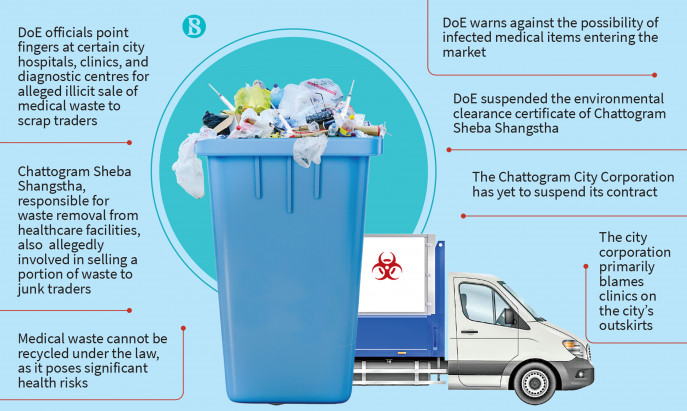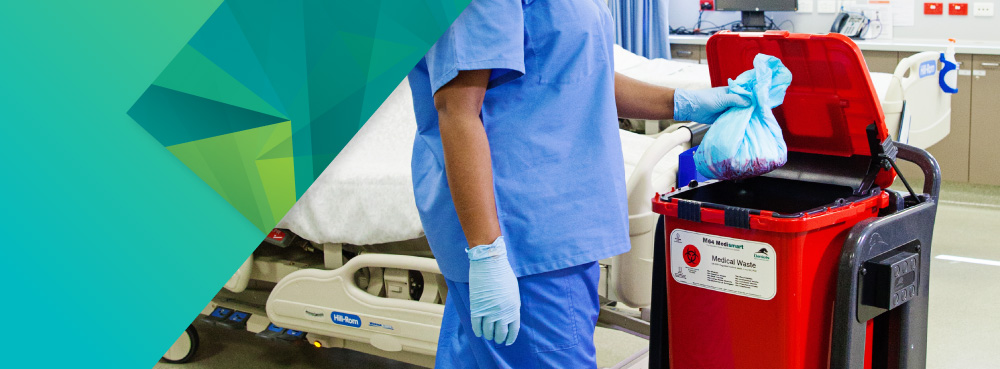Community Care: Seamless and Reliable Medical Waste Removal Near Me
Community Care: Seamless and Reliable Medical Waste Removal Near Me
Blog Article
Minimize Expenses and Make The Most Of Safety And Security: Effective Medical Waste Disposal Approaches
Effective clinical waste disposal techniques are essential for healthcare facilities to optimize and reduce costs safety and security. With the expanding problem for ecological sustainability and the enhancing number of regulations bordering waste monitoring, it is vital for healthcare organizations to take on certified and effective practices. By executing proper partition and classification, effective product packaging and labeling, risk-free transport and handling, effective treatment and disposal methods, and compliance with governing standards, health care facilities can guarantee the safe and responsible monitoring of medical waste. In this discussion, we will certainly explore each of these approaches in information, offering understandings and functional tips for healthcare professionals to optimize their garbage disposal procedures.

Proper Segregation and Classification
Correct segregation and classification are important elements of efficient medical garbage disposal techniques, ensuring the security of health care workers, the general public, and the atmosphere - medical waste removal services. medical waste disposal services with WasteX. By dividing different kinds of medical waste at the point of generation, healthcare centers can reduce the threat of cross-contamination and possible damage to ecological communities and individuals
One of the vital aspects in appropriate segregation is the identification and classification of medical waste. This includes categorizing waste into various groups, such as transmittable, hazardous, radioactive, or pharmaceutical waste. Each classification needs certain handling, storage space, and disposal techniques to avoid any kind of adverse results on human wellness and the environment.
Furthermore, appropriate segregation also includes making use of color-coded labels and containers to clearly determine and separate the various types of clinical waste. This aids health care employees and waste monitoring workers to quickly acknowledge and take care of the waste appropriately. Red containers may be made use of for infectious waste, while yellow containers might be marked for dangerous waste.
In addition to partition, appropriate classification likewise entails the correct product packaging and control of medical waste. This ensures that waste is safely kept and carried without positioning any kind of threats to people or the environment. Making use of puncture-resistant and watertight containers, along with effectively sealing and labeling them, helps to stop any type of unexpected exposure or launch of dangerous compounds.
Reliable Packaging and Classifying
Efficient product packaging and labeling play a critical role in guaranteeing the efficient and safe disposal of medical waste. Correct product packaging is vital to stop leakage, damage, or splilling during transportation and handling. It helps to lessen the danger of contamination and shields healthcare employees, waste management personnel, and the setting from prospective threats.
Medical waste must be packaged in leak-proof and tough containers that are resistant to penetrate and damage. These containers should be properly secured to stop any leak. Furthermore, the packaging must have the ability to endure the problems of transportation, consisting of temperature variants and misuse.
Classifying is similarly vital as it gives critical information about the materials of the waste and any kind of possible dangers related to it. The tags need to include the name of the healthcare center, the sort of waste, and any type of special delivery directions. Standardized and clear labeling makes certain that waste monitoring employees can conveniently recognize and deal with the waste appropriately.
Effective product packaging and labeling likewise aid in the correct partition and classification of clinical waste. Clear labeling permits simple identification of various waste streams, such as transmittable waste, sharps, or pharmaceutical waste. This aids in simplifying the disposal procedure and guaranteeing that the waste is treated or disposed of based on regulatory standards.
Safe Transportation and Handling
Ensuring the risk-free transport and handling of medical waste is of utmost value in order to protect against any prospective wellness and environmental risks. Medical waste, such as sharps, polluted materials, and pharmaceutical waste, need to be properly packaged and handled to decrease the danger of exposure to harmful compounds and virus.
Transporting clinical waste requires conformity with strict regulations and standards established by environmental agencies and neighborhood authorities. These guidelines aim to shield the health and wellness of workers associated with waste monitoring and protect against the launch of hazardous materials right into the setting.
To make sure secure transport, medical waste needs to be positioned in puncture-resistant and watertight containers that are properly sealed and classified. her response Additionally, it is vital to use specific vehicles furnished with appropriate safety features to transfer clinical waste. medical waste disposal services with WasteX.
Handling clinical waste also needs correct training and adherence to safety protocols. Employees entailed in the handling of clinical waste should use appropriate personal safety tools (PPE) such as dress, masks, and handwear covers to lessen the risk of exposure. They must also comply with rigorous hygiene techniques to avoid the spread of infections and ensure the safe disposal of waste.
Effective Treatment and Disposal Techniques
Implementing ideal therapy and disposal techniques is essential in taking care of clinical waste successfully and minimizing prospective health and ecological risks. Medical waste, which includes sharps, transmittable products, chemicals, and pharmaceuticals, can pose considerable hazards if not handled and taken care of appropriately. There are a number of treatment and disposal methods available that adhere to regulative guidelines and advertise safe techniques.
One usual technique is incineration, which entails melting the waste at heats. Incineration is efficient in destroying virus and reducing the volume of waste, but it can launch hazardous pollutants right into the air if not correctly controlled. It is vital to use contemporary burners furnished with exhaust control modern technologies.
An additional method is autoclaving, which utilizes heavy steam and pressure to disinfect the waste. Autoclaving works in eliminating microorganisms and decreasing the volume of waste, but it requires cautious tracking and maintenance to ensure appropriate functioning. The disinfected waste can after that be safely disposed of in a landfill.
Chemical therapy is an additional alternative, which involves utilizing disinfectants or various other chemicals to reduce the effects of microorganisms. This technique is typically made use of for liquid waste, such as research laboratory samplings. It is important to use appropriate chemicals and follow proper treatments to ensure effective therapy and protect against environmental contamination.

Compliance With Regulatory Guidelines
Following regulatory standards is important in making sure correct conformity with clinical garbage disposal techniques. These standards are established to secure public health, prevent environmental contamination, and preserve office security. Compliance with governing standards is vital for medical care centers, as non-compliance can lead to fines, fines, and reputational damage.
Regulative standards lay out the proper handling, storage space, transport, and disposal of clinical waste. They give details directions on packaging needs, labeling, and record-keeping. These standards likewise deal with the partition of various waste streams, such as sharps, infectious waste, and pharmaceutical waste. Health care facilities have to ensure that their waste administration techniques line up with these standards to reduce the risk of exposure view to harmful materials and stop the spread of infections.
To keep conformity, health care centers ought to develop thorough waste monitoring programs that consist of staff training, regular audits, and recurring surveillance. It is important to keep current with any modifications or updates to regulatory guidelines, as practices may evolve in time. By remaining educated and applying correct procedures, health care facilities can decrease the possibility for regulative violations and safeguard the health and safety of their team, people, and the bordering area.
Final Thought
Finally, implementing reliable medical garbage disposal approaches is vital for lessening expenses and optimizing safety and security. Appropriate partition and categorization, reliable product packaging and labeling, risk-free transportation and handling, and effective therapy and disposal methods are essential steps to make certain compliance with governing guidelines. medical waste removal. By sticking to these strategies, health care centers can safeguard the setting and public health while likewise lowering financial problems connected medical waste disposal services with WasteX with medical waste administration
By applying proper partition and categorization, efficient product packaging and labeling, secure transportation and handling, effective treatment and disposal approaches, and conformity with regulatory guidelines, health care centers can make sure the risk-free and accountable management of medical waste. Red containers may be utilized for contagious waste, while yellow containers might be marked for hazardous waste.
Clear and standardized labeling makes sure that waste monitoring employees can conveniently recognize and handle the waste appropriately. (medical waste disposal services with WasteX)
Clear labeling enables for simple identification of various waste streams, such as contagious waste, sharps, or pharmaceutical waste. These standards also resolve the segregation of different waste streams, such as sharps, infectious waste, and pharmaceutical waste.
Report this page